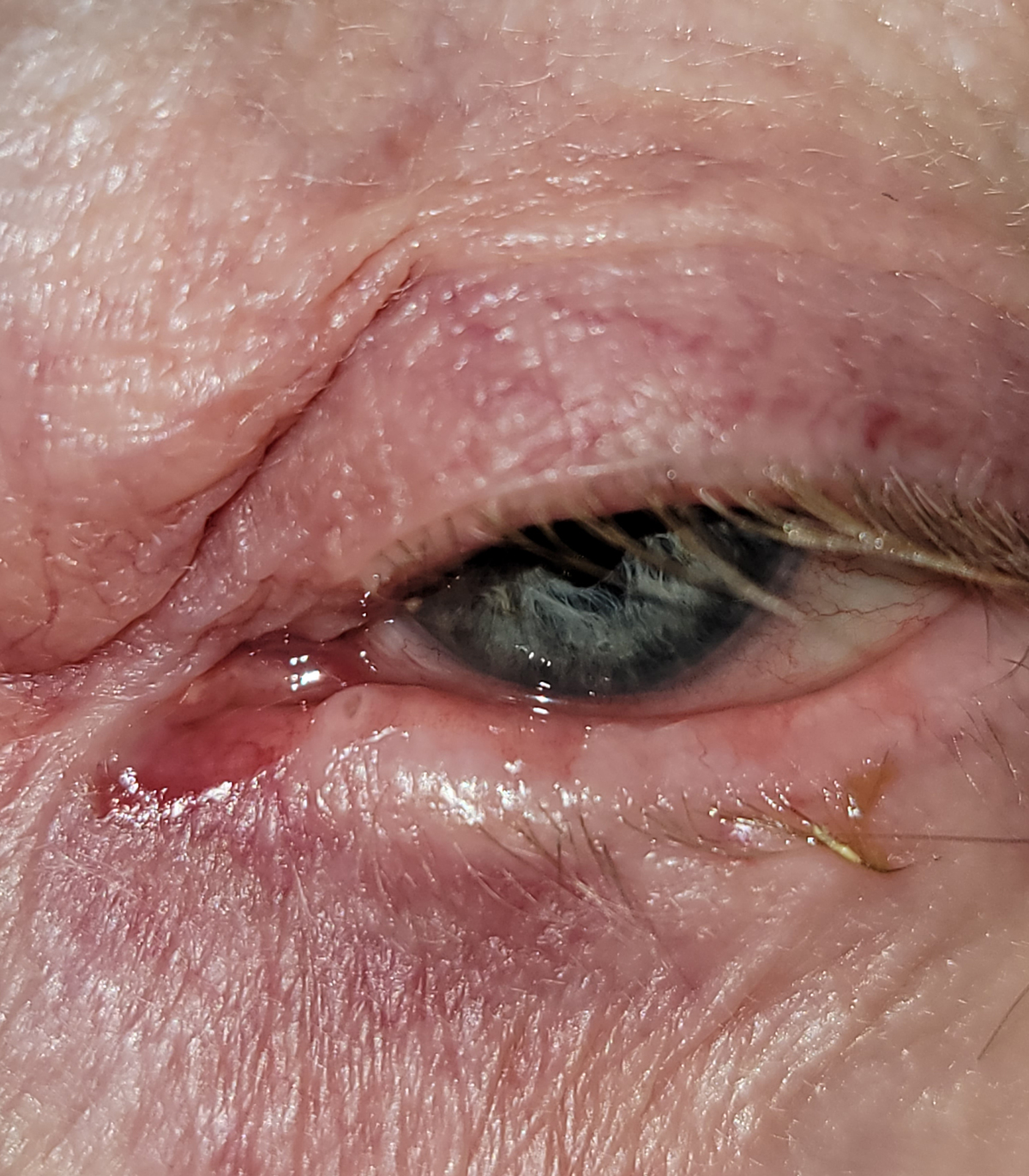 |
An 88-year-old female was referred by her glaucoma specialist for epiphora and sore eyelids. She reported that her vision is stable but she is experiencing excessive tearing and is constantly wiping her lids with a tissue. Her inner canthi have become sore and this has decreased the quality of her life, she explained. She uses latanoprost daily and has been recommended artificial tears and lid hygiene for dry eye.
 |
|
Click image to enlarge. |
Upon examination, she was found to have ptosis of both eyes, medial canthal fat prolapse and inferior medial lower lid ectropion with no apposition of the puncta to the globe. Tears were pooling in the inner canthus, causing excoriation of the skin. Punctal probing showed bilateral inferior lacrimal duct obstruction. There was significant lid margin alteration with blunting and obliteration of the meibomian glands.
Surgical intervention was discussed with this patient, including ptosis repair and lateral tarsal strip to tighten the inferior lid and reposition the puncta. However, since the inferior puncta is blocked, she would also need to undergo lacrimal duct repair.
This patient was not interested in surgery and requested palliative care for her symptoms. Without any meibomian glands, traditional meibomian care (e.g., hot compresses) will be less than helpful. However, removing the bioload and the overspill of the latanoprost may reduce irritation. In cases of chronic epiphora with excoriation, barrier creams are quite effective in protecting the skin.
This patient was instructed to wipe the skin around the eyes with a moist towelette 10 minutes after instilling the latanoprost and then apply a scant amount of a barrier cream, such as zinc oxide or Vaseline, to the affected areas. Zinc oxide has antibacterial properties as well as UV barrier function and is non-toxic to the eye.


